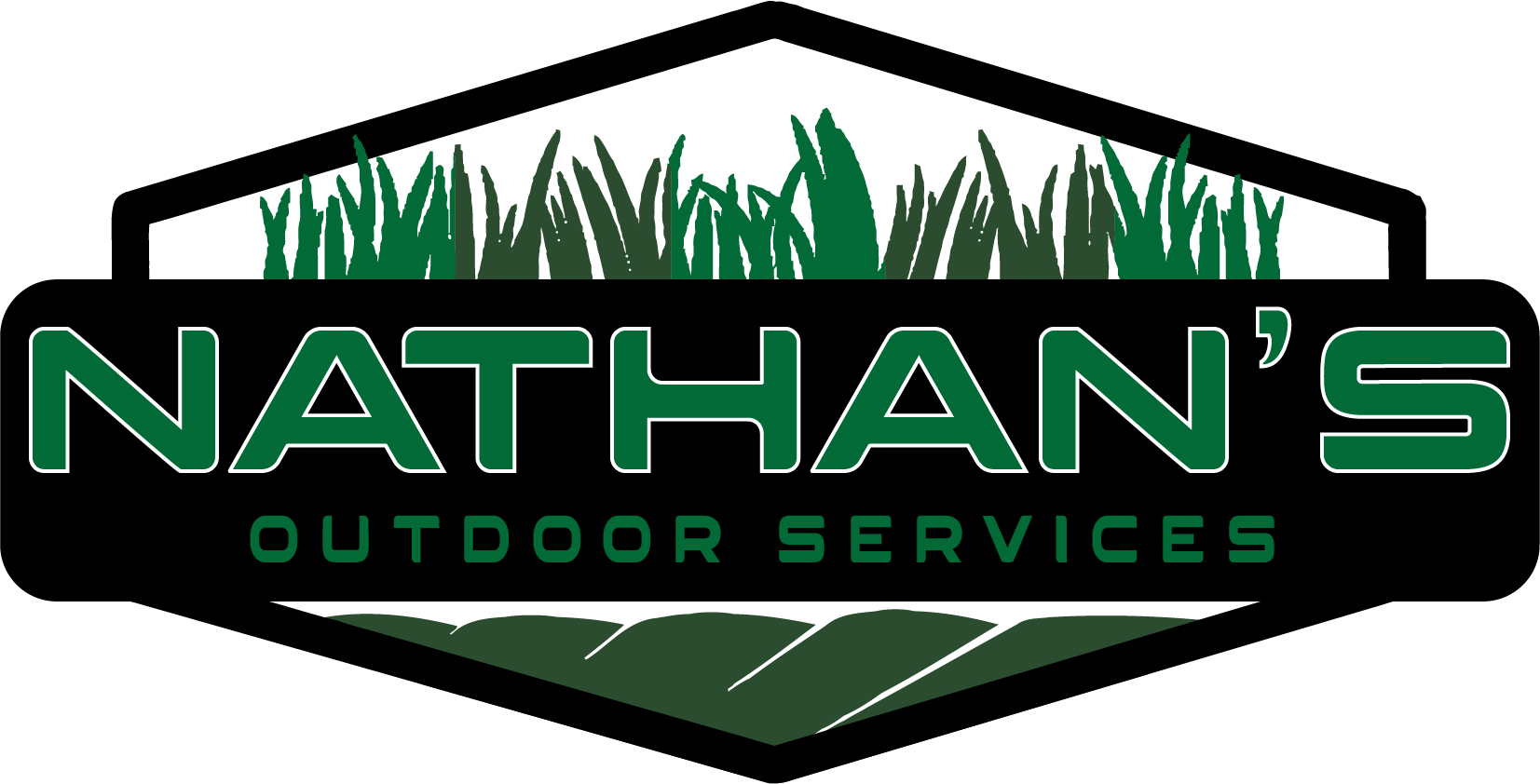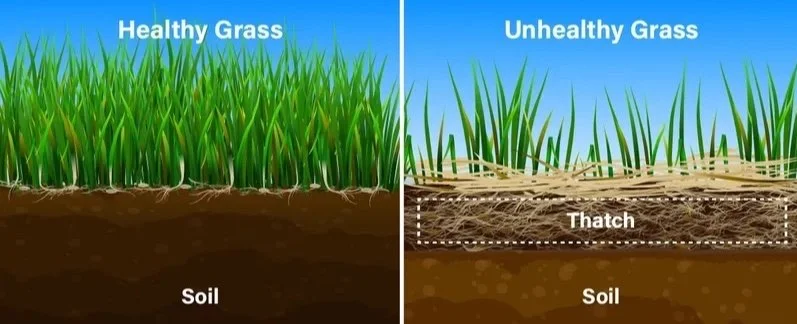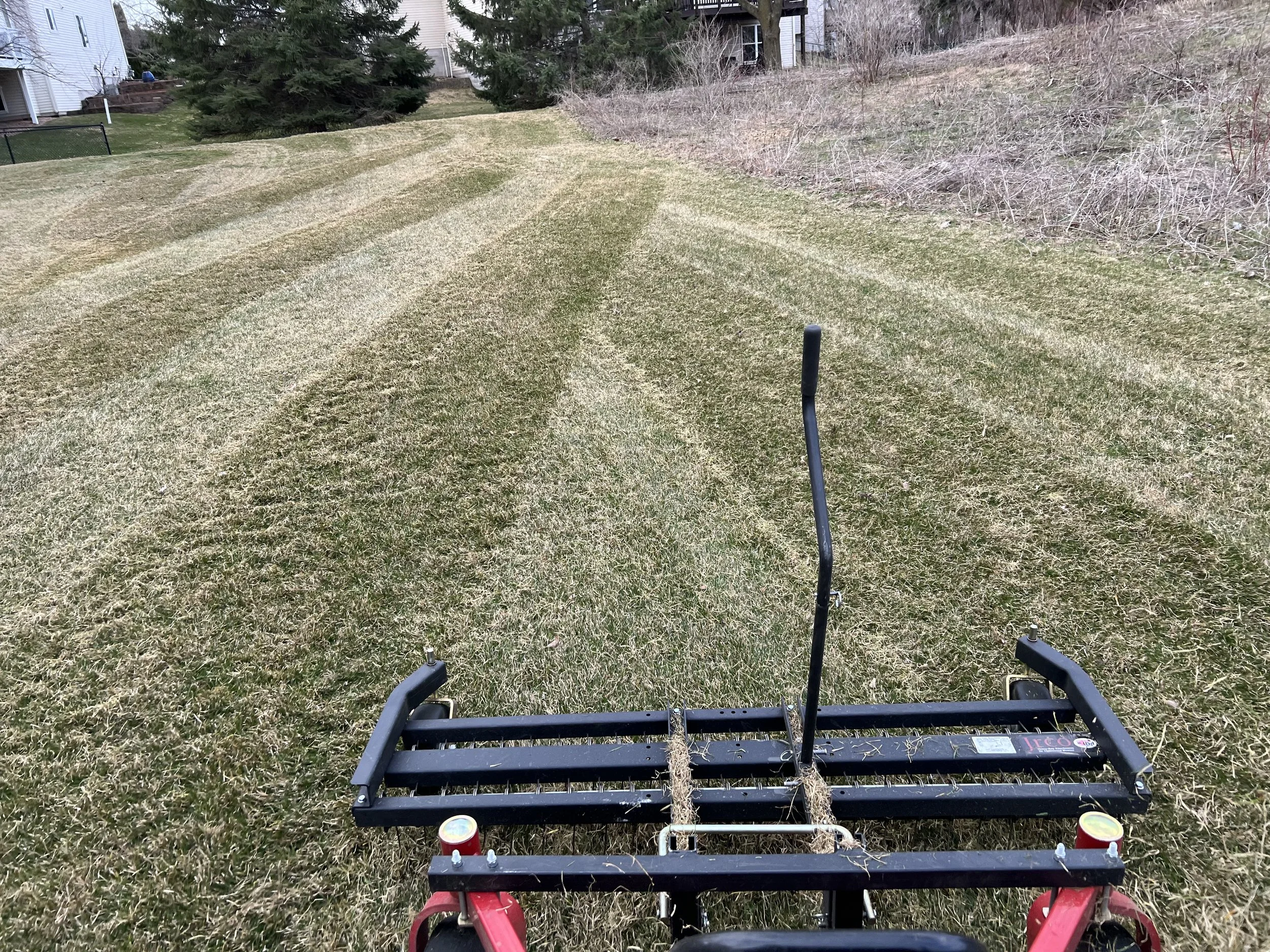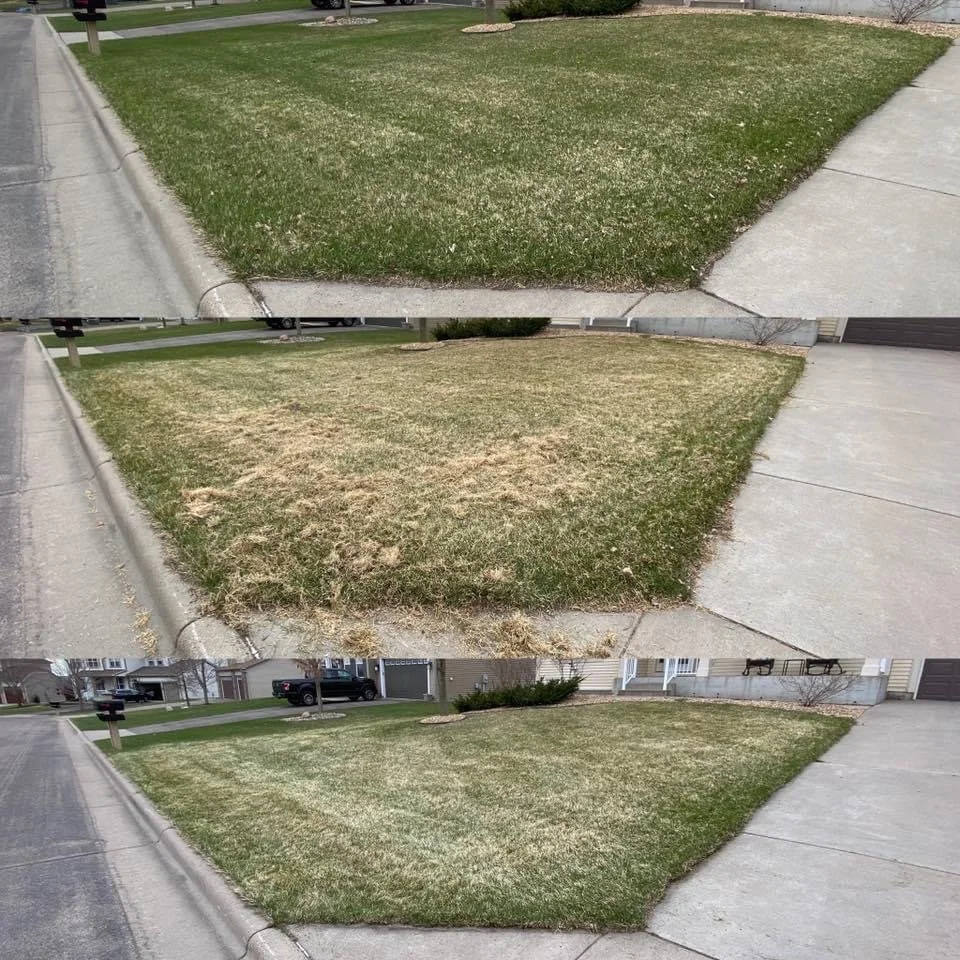Dethatching
A fresh Raking in spring
What does dethatching look like?
The negative effects of thatch.
Dethatching process and equipment.
Before, during, and after Dethatching
Nathan’s team performing Dethatching.
A pile of thatch.
Dethatching is one of the best things you can do for your lawn. Nathan’s Outdoor Services offers Dethatching service as a first step in spring, typically from mid April to late May.
What is thatch and why do I need it removed?
Over the years, especially in thick luscious turf and newer sod, a layer of thatch will grow and start to build up in the bottom level of the turf. This thatch layer will restrict and stop vital nutrients such as water, oxygen, and fertilizers from reaching your soil, thus reducing the feeding source for the grass roots. Without food and nutrients, the turf-grass plant’s health will suffer.
Thatch build-up is a normal part of the turf-grass plant growth process, however in order to achieve a thriving lawn, human intervention is required. This means manually reducing the thatch layer, typically with a metal dethatching rake. Nathan’s Outdoor Services recommend dethatching yearly for the best looking and healthiest lawn.
The nicer lawn you have, the more the thatch layer typically builds up.
How can we fix the thatch problem?
Nathan’s Outdoor Services offers a service called Dethatching, in Spring. Please reach out for a Free Estimate, or give us a call to get on our list.
Our Spring Dethatching service involves driving metal-tine rakes and mowers over the turf areas, giving them a fresh spring raking and lifting/loosening thatch out of the ground. Next, we drive over the lawn again, vacuuming up all the loose thatch and collecting it in our baggers. Once the thatch is collected, we haul it away, and dispose of it off-site.
Other benefits of Dethatching by Nathan’s Outdoor Services
Give turf grass roots access to nutrients, water, and oxygen
Improve soil health and nutrient density
Expose lower grass to more sunlight
Improve grass health and in-turn, curb appeal
Increase root strength, and encourages more root growth
Reduce susceptibility to disease, fungus, and pests
Improve the effectiveness of fertilizer
Save water, as less water can be used to reach the roots.
Control weeds
Decrease stormwater runoff
~Written by Nathan Salmonson & Experienced Professionals at Nathan’s Outdoor Services.





